Ryan Hall's Blog, page 242
June 20, 2016
How Nike+ Run Clubs Appeal to “Non-Runners”
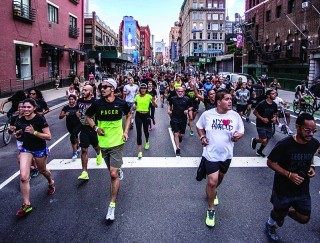
A scene from a typical Nike+ Run Club event in New York City.
On a Tuesday night in April, 60 or so runners gather around a coach on the edge of a track in Portland, Ore., sweaty and spent, basking in the endorphin rush after a hard workout. They’ve just completed 18 repeats of 200 meters at their mile race pace, interspersed with four 400-meter loops at 10K pace. The coach, Chris Bennett, is waxing eloquent.
“That was a legit workout, and you owned it!” Bennett says. “You showed up. You stepped up to the line each time. That’s what we celebrate! You don’t get many chances in a day to be a badass. You were badasses tonight!”
He sounds like a high school coach motivating his young, fast athletes. But the group here at the Nike+ Run Club (NRC) Portland Speed Run are not all young, or even fast.
Some zipped off the 200s in close to 30 seconds; others took 50 or more seconds. A few are ropy-muscled masters runners in racing singlets and shorts, but the majority are 20- or 30-somethings, entirely new to running, and in cotton T-shirts, basketball shorts, stocking caps or yoga-style apparel.
“I can’t even remember the last time I ran on a track,” says Starbuck Ballner, 29, a Coast Guard corpsman stationed nearby who has been running by himself on rural roads. “I was pleasantly surprised to find that I was able to stick with the fastest group.”
Ballner, like many others, is buzzing from the experience. “The community of runners cheering each other on, giving out high-fives, pushing their times lower by a second or two—and cracking jokes the whole time—was even better than I had hoped for,” he says. “It was only a Tuesday night speed workout, but I felt like it was the Olympic Trials.”
The post How Nike+ Run Clubs Appeal to “Non-Runners” appeared first on Competitor.com.
New York City’s First Lady of Running
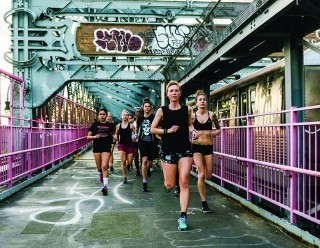
Jessie Zapo leads Girls Run NYC across the Williamsburg Bridge. Photo: Sue Kwon
Every Wednesday at McCarren Park in Brooklyn, N.Y., a couple dozen women gather at 6:30 p.m. sharp for their weekly track workout, although few of them have ever run competitive track in their life.
Many have been to a Girls Run NYC track session before, but first-timers need only check the group’s Instagram feed for its artfully styled weekly flyers disclosing the practice’s time and place, adorned with a certain type of female icon. One week it’s Bobbi Gibb, the first woman to run the Boston Marathon; other weeks it’ll feature Frida Kahlo, Joan Jett or Beyoncé.
Trackside, the tall lady with short blond hair and a big smile at the center of it all (including the Instagram account) calmly calls for a bit of stretching to start things off. One of the group’s longtime members who dutifully acts as her megaphone then echoes her, shouting, “OK, time for dynamic stretching!”
Girls Run NYC’s leader may speak softly but she carries a big reputation: Her given name is Jessica Zapotechne, except nobody ever seems to call her that. Ask nearly any regular group-run participant in New York City about “Jessie Zapo,” however, and they’ll all know her. There’s even a good chance that she introduced them to one of the many proliferating running groups known as run crews that are popping up in nearly every neighborhood in the Big Apple. For others, this 37-year-old art therapist who’s sometimes nicknamed “the First Lady” might have been the reason they came out in the first place.
The post New York City’s First Lady of Running appeared first on Competitor.com.
How the District Running Collective Grew from a Birthday Celebration to a Weekly Run Club
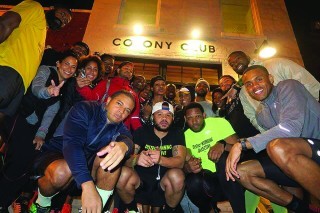
DRC co-founder Matt Green (in red) with his group on a Wednesday Night Run. Photo: District Running Collective
Three years ago this spring, Matt Green just wanted to do something different for his birthday.
After graduating from college a few years back, he and some of his buddies fell into a typical routine of working, trying to get some kind of exercise in and then
ultimately hanging out at bars.
Although none were committed runners, they volunteered at the Nike Women’s Half Marathon—passing out water to runners in the finisher area—and were moved by the positive energy and sense of accomplishment the runners gave off. At the same time, they’d seen the spark of excitement around some newly formed running “crews” in New York City and London.
So Green decided that, instead of just going out to a bar and having a bunch of drinks with friends, he’d turn his birthday celebration into a 5K group run at midnight. It would still be set at a bar along H Street and there would be food and libations afterward, but the point was to do something fun—and unique—with running.
“We didn’t know how many people would show up, but it got big in a hurry,” Green, now 30, recalls. “We had 125 people out at midnight on H Street, not to go to the bars, but to go on a group run! All we really did was post it on social and people started sharing it, and it just spread. That’s how we found out social media marketing can work and start to build something.”
And that’s how the District Running Collective was born.
Green and his pals put on more themed events—including another Midnight on Mars later that summer. However, their informal Wednesday night fun runs based out of The Coupe restaurant also started to gain a following.
What began as a small group of 10 to 15 runners meeting at a neighborhood restaurant quickly grew to 40 or 50 runners. The low-key, anyone-can-join culture had no barriers to entry. It didn’t matter if you were already training with a group or if you’d never run before at all. All you had to do was show up and run 3 miles or so before having some 50-cent hot wings, kale salad and a cold beer while mingling with a diverse group of people.
The group only has a few rules and guidelines, and most are tied to having fun, being safe and making conversation: Headphones aren’t allowed, and you need to leave your ego behind.
“It became a thing, and people that we’d run by on the streets wanted to know what we were doing,” Green says. “We’d shout out, ‘We’re District Running Collective! Come run with us on Wednesdays!’ And then the next week, you’d see some of those people running. The cool thing is that it was attracting a lot of people who would have never considered running before.”
The group continued to grow into 2014, but Green says the retention rate fluctuated. Instead of making it just a basic Wednesday night run, he really wanted to develop a sense of community, where people could start training for races together and develop friendships outside of the group. (They avoided running around Washington D.C.’s celebrated monument parks, if only because they wanted to keep the runs within local neighborhoods.)
In addition to organizing long runs on the weekends and trips to races in New York City, Miami and Chicago, the DRC also organized a Christmas party.
“We rented a bar and everyone came out all dressed up,” Green recalls. “Normally we’d just see each other in running gear after a run. At the Christmas party, everybody looked completely different in nice clothes. That’s when you could really start to see people were interested in being part of a community.”
The Wednesday night runs continued to grow, so they found a bigger meeting point at the Colony Club restaurant and bar. Before long, many of the people who showed up but never considered themselves runners were training for their first half marathons with support from the group and loads of inspiration via Instagram posts.
“I was a very casual runner before I moved to D.C.,” says Ashlee Lawson, a 32-year-old marketing director who started running with DRC in 2014. “I heard about it and decided to go for a run because I was looking for something to do when the weather got better that spring. My first run sucked because it was cold and raining and I hadn’t run much in eight months. But it’s one of those things where you’ve gotta stick with it, and DRC gave me a reason to stick with it.”
Lawson encouraged four other friends to come out for the weekly runs and by that fall they ran their first half marathon together in Philadelphia. That kind of encouraging vibe has continued to spread: DRC has more than 5,200 followers on Instagram and 1,100 people on its email list.
Since 2015, the DRC has regularly attracted more than 100 runners for its Wednesday night runs, which is why Green smartly appointed captains to help keep things manageable and let runners self-
select which group they want to run with—the front-of-the-pack Flyers, the moderately paced Movers or the easy-jogging Cruisers—based on their own speed and experience level.
“For me, running is almost secondary to the community,” says Lawson, who became a DRC captain in 2015. “Running is sort of the common thread that holds us all together. It’s the reason we’re able to be this community and be social and become friends and have these relationships that hold each other accountable.”
This year the DRC has worked with D.C. mayor Muriel Bowser in her initiative to help the city’s citizens become more fit and lead healthier lifestyles. They also developed a grassroots partnership with Baltimore-based Under Armour.
Ultimately, Green says, DRC exists where fitness, fun and community collide.
“I didn’t think anything would materialize as big as it has,” Green says. “To see people come out who would never think about running just a few months later sign up for a race, train for a race and finish a race is really cool.”
RELATED:
—New York City’s First Lady of Running
—How Nike+ Run Clubs Appeal to “Non-Runners”
The post How the District Running Collective Grew from a Birthday Celebration to a Weekly Run Club appeared first on Competitor.com.
Love and PRs: Running-Themed Weddings on the Rise
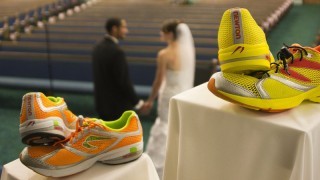
Cassie and Ryan Celestain had a running theme for their wedding, including Newton shoes opposite the unity candle. Photo: Ammann Photography.
When Ohio residents Thailyr Scrivner and Peter Jaegersen first met, it was for a 4 a.m. trail run. A mutual friend had suggested to Scrivner, who wanted to get into ultrarunning, that she talk to Jaegersen. The two strangers agreed to meet at a park in the dark before work.
“The sensible part of me should have been like, ‘nope, that’s creepy,’ but the runner part of me thought, ‘yeah, that’s normal,’” Scrivner says.
What followed was a courtship of muddy ultras and trail runs before they officially started dating—Scrivner recalls how all those long runs were kind of like speed dating. From there, the adventures only got crazier. They did 100-mile races and the 24-hour World’s Toughest Mudder. If they weren’t finishing the race hand-in-hand, then they were crewing for each other.
It seems only inevitable, then, that they got engaged at the finish line of the Keys 100. And when they announced to their friends and family that the wedding would involve trail running too, “No one was surprised,” Scrivner says.
With the help of a local race organizer, the two essentially planned a 10K/5K race, open to the public, with a wedding ceremony about a mile into the course. Everyone ran the course (except the elderly relatives who walked to the ceremony site down a fire road), stopped to watch the wedding ceremony, and then finished the race. Then they all went to the local running store for a post-race/wedding celebration.
“I don’t know if [my mom] was quite sure if it counted as a wedding,” Jaegersen says.
While most people might not make their wedding guests join them for a run, more and more runners are looking to incorporate their interests into their wedding. Partially it’s because there’s been a trend in recent years (as the wedding industry has exploded) for people looking to add their own unique or personal touches to their weddings, says Jessica Janik, owner of the wedding planning company The Invisible Bridesmaid. But also running is an integral part of a lot of couple’s origin stories.
“I’ve noticed a lot of people have been meeting that way,” Janik says.
Cassie Celestain met her husband, Ryan, while they were standing around waiting for results after the Tulsa Run 15K in 2010. They started talking and kept talking during the awards ceremony. A few days later, they friended each other on Facebook and decided to meet up.
“Our first date was a run,” she says.
When they got engaged later that year, they both knew they wanted to go back to the race they had met at. So one year after they met, they ran the Tulsa Run again the morning of their wedding and crossed the line wearing a veil and bow tie. Then they had a relatively traditional wedding, but with a running theme: shoes for decorations, a starting and finish line banner at the church and reception, and post-race-style food (Gatorade and bananas).
“We wanted to have a wedding that represented us,” Celestain explains.
Janik, who has also done a wedding for a client who wanted running-themed touches, says there’s lots of little details that can be fun to incorporate: photo shoots in running clothes, tables named after races you did together, bibs as invitations or table cards, fuel belts as favors with energy gels as the night goes on, running pictures in the guest book, finish and start line banners or mile markers as decorations.
It’s hard to pin down exactly how many running-themed weddings and proposals there are, but it appears to be on the rise, as people look for new ways to meet romantic partners with similar interests and to celebrate those interests.
There are running singles websites and running matchmaking races, like the Love Me Run 5K, which takes a twist on speed dating. You run each 1K loop of the 5K course with a new partner you’re matched with. Or, try the Luv Run, which uses color-coded bibs to let you know who’s interested and who’s not. Even big companies are getting in on the run fun. The Rock ‘n’ Roll Las Vegas Marathon has a run-through wedding chapel on course, which attracted 45 couples to tie the knot last year (and another 144 to renew their vows). Ironman offers a VIP wedding proposal package, and you can buy a Oiselle runaway bride dress to get all this done in—which Scrivner wore for her race/wedding.
“It’s less of a theme than it is a lifestyle,” Jaegersen says.
The post Love and PRs: Running-Themed Weddings on the Rise appeared first on Competitor.com.
Why Runners Need Magnesium
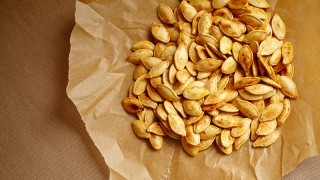
Why magnesium is an important part of any runner’s diet, and a list of foods rich in the mineral.
Q: I recently had a blood test that showed a magnesium deficiency. What foods are good sources of magnesium (I would prefer not to take a supplement? Is magnesium important for training and racing, or for general health?
A: Magnesium is an essential mineral that demands attention when it comes to health assessment. It is required by virtually every cell, and it’s vital in more than 300 chemical processes that sustain basic human health and function, including muscle contraction and relaxation, nerve function, cardiac activity, blood pressure regulation, hormonal interactions, immunity, bone health and synthesis of proteins, fats and nucleic acids. Magnesium is also crucial for energy metabolism by the activation of enzymes known as ATPases, which are needed to generate ATP (adenosine triphosphate).
When ATP is broken down, energy is released for all muscle contractions, and when exercising strenuously, this turnover is extremely high, meaning that ATP needs to be synthesized quickly. Thus a shortfall of magnesium can limit energy production, leading to fatigue, lethargy, reduced power, muscle twitches or cramps. Chronic deficiencies of magnesium are also implicated in reduced bone mineral density and increased risk of osteoporosis as well as anemia, depression and irregular heart rate. Virtually every body system can display symptoms because systems throughout the body rely on magnesium. Athletes in particular might find it easy to explain away fatigue or muscle cramps, lowered immunity, and even altered heart rates, and indeed these symptoms are common and multi-faceted in cause. However, a simple magnesium deficiency could also be the underlying factor.
There is emerging evidence that magnesium requirements are significantly elevated in athletes, and that performance might benefit from higher intakes. Aside from being used up in the production of energy, magnesium might also assist performance by reducing accumulation of lactic acid and reducing the perception of fatigue during strenuous exercise through its action on the nervous system. Magnesium is also lost through sweat, so athletes training hard in hot and humid environments might further increase demands.
Magnesium is not produced by the body, so it needs to be ingested daily through the consumption of magnesium-rich foods such as whole grain cereals, leafy greens, nuts and seeds. Magnesium deficiency is actually quite common—dietary surveys indicate more than 70 percent of the population consumes insufficient magnesium. This is probably because our eating habits generally rely on processed, high-starch and refined foods, which are all poor sources of this vital mineral.
Eating a variety of food will help you meet and maintain magnesium requirements, and provide you with other essential vitamins and minerals.
Pumpkin seeds are one great source of magnesium and an easy addition to any diet—add them to cereal, salads, pasta and rice dishes for extra crunch or simply eat a handful as an afternoon snack. Spinach and kale are also rich in magnesium, but some magnesium is lost through the cooking process. Some common foods might also be magnesium fortified, and certain sports foods and supplements do recognize this important mineral by including it in significant amounts. All of these sources contribute to overall requirements, so check labels to gauge your intake before turning to a supplement.
The recommended daily allowance for the general population is a minimum of 300 to 350 mg for women and 400 to 450 mg for men. Research suggests that endurance athletes can safely consume 500 to 800 mg daily, and there is debate as to whether this amount should be higher still.
Aside from poor dietary intake, there are other potentially serious factors that may cause a magnesium deficiency, such as gastrointestinal absorption problems, physical stresses such as illness or even very cold weather, alcoholism and diabetes. Additionally, medications, prescription and non-prescription, and/or other supplements can interact with magnesium and its absorption or action within the body. So it’s important to first discuss with your doctor your own circumstances and any other medical issues that may be causing your low magnesium status and whether supplementation is required in addition to eating magnesium-rich foods.
Magnesium-Rich Foods
Pumpkin seeds (roasted)
532
Almonds
300
Brazil nuts
225
Sesame seeds
200
Peanuts (roasted, salted)
183
Walnuts
158
Rice
110
Whole-grain bread
85
Spinach
80
Cooked beans
40
Broccoli
30
Banana
29
Potato (baked)
25
(Milligrams per 100 grams).
Source: USDA nutrient database.
The post Why Runners Need Magnesium appeared first on Competitor.com.
Q&A: Gordy Ainsleigh Talks Western States, Trail Running, Beards and More
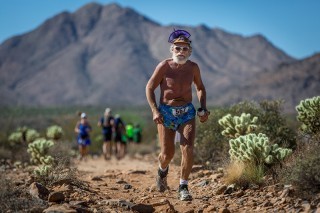
While the Tarahumra and many other indigenous cultures have been running long distances for ages, Gordy Ainsleigh was the first person to officially cover 100 miles on foot in a trail race. Many at the time, including Ainsleigh’s coach, didn’t think it could be done. But in 1974, when the horseman showed up for the 100-mile Western States Trail Ride without a horse, he was ready to give it a try. The race eventually became the Western States Endurance Run (WSER), and is now the oldest 100-mile race in the country. Ainsleigh, 69, who is also a chiropractor, sommelier, arborist and gardener, was a late addition to the 2016 WSER roster due to challenges qualifying during the standard November-to-November window. After being granted an extension, he earned his bib at the Rocky Raccoon 100-miler in February.
You’ve completed WSER more than 20 times, yet this June you are towing the line yet again. Why?
Because I qualified! Except for my time in the military and school, I’ve lived within 12 miles of Auburn my entire life. I’m a homebody. But I love adventure. The WSER board has created a whole-feeling adventure right here on my favorite trails. Life is good, why not get as much as you can?
What is your training protocol for 100-mile races?
When I started running, I trained on trails because I came from a horse background and that’s what I knew. I train the way people trained on horses—you didn’t run a horse hard two days in a row. I used to run every other day. Now running every third or fourth day is good. I like to get in a 45-mile training run before a 100-mile race. I also still ride horses, practice martial arts and rock climb.
With spending so much time on the trails, have you had any close calls with wildlife?
I’ve met four mountain lions in my years of running. Three ran away. The fourth time, he and I were coming towards each other, and we both just stood there. The unblinking three-minute stare down was trying to see if I was a safe kill. I didn’t give him that. I’m quite a wildlife fan. The whole time I was in awe of just how incredibly special it was to be in that situation, staring into those luminous green eyes, even with the deadly potential. Our standoff ended when a squirrel charged the mountain lion. Most times, especially when running at dusk, I’ll carry a nice sturdy piece of dead Manzanita in one hand so I’m prepared. That time took me by surprise.
Given that you are the first official trail ultra finisher, yours also counts as the first beard of ultrarunning, yet another trend to your credit! Why do you have one?
I don’t like to spend time in front of a mirror. It’s absurd to me that men shave off one of the signs of manhood. It’s a secondary sexual characteristic. Men with stubble aren’t giving themselves permission to really show their masculinity. It’s more of a halfway, socially acceptable thing.
What do you think about ultrarunner, two-time winner of WSER and fellow beard aficionado Rob Krar?
I think he’s zealous, like me.
How does nutrition come into play for you?
I eat whole foods. I also run and climb shirtless to get more sun exposure and Vitamin D. It really helps with malabsorption issues and promotes good health. I’m a big guy; my race weight is 203 pounds.
What do you think has contributed to your enduring running success?
“If I go further than others it’s because I stood on the shoulders of giants.” Wendell Robie (founder of the Western States Trail Ride, aka the Tevis Cup) and Bud Johns (a public relations director at Levi Strauss & Company who came up with the ‘Ride & Tie’ race concept) created the framework for my success. I just added the running element to what they developed.
I also have guardian angles. I had five. Now it’s either four or five. I sent two to a friend who was going on a mission and I know one came back. The folks upstairs get tired of people acting stupid. I’ve had many deliveries from certain death.
The post Q&A: Gordy Ainsleigh Talks Western States, Trail Running, Beards and More appeared first on Competitor.com.
Happiness in Motion: Deena Kastor is Chasing New Challenges

Deena Kastor enjoys a moment at the ASICS Wine Body Sole Weekend in Napa Valley in May.
Three-time U.S. Olympian and American marathon and half marathon record holder Deena Kastor says her life has been nothing but full since she opted not to race in the U.S. Olympic Trials Marathon this past February in Los Angeles. But she also says she’s not retired, either.
Kastor bowed out after straining a glute about a week before the race. Despite having several last-minute, intensive chiropractic sessions, she realized that gritting through 26.2 miles in the mid-day heat of Los Angeles with an injury wasn’t how she envisioned making another run at her fourth Olympic team.
“That’s not where I am now. I wanted to enjoy it. I wanted it to be about health and wellness and sport,” says Kastor, 43, who is also president of the ASICS Mammoth Track Club, which has a development training team of Olympic hopeful athletes, youth programs and a summer training camp for adults. “I didn’t want the Trials to be a struggle. Deciding to be there for my teammates instead felt right.”
By also choosing not to compete in the U.S. Olympic Trials on the track in July, it means this will be the first Olympic qualifying cycle since before 1992 that Kastor hasn’t participated in. But with U.S. records in the marathon and half marathon (2:19:36 and 1:07:34, respectively) still firmly in her possession, not to mention a bronze medal from the 2004 Olympic marathon and numerous masters records, it’s not that she has anything left to prove.
However, the decision not to compete in the Olympic Trials allowed her to spend more time on the trails around her home in Mammoth Lakes, Calif. Kastor used to “treat” herself with a few trail runs after completing a marathon training cycle, has been able to add dirt runs to her schedule with welcome regularity.
“This lore of trail running has really been just a tease for years,” she says. “Now I can go into the hills and enjoy it”
But, she’s still in training. In fact, her coach, husband Andrew Kastor, says she’s in the best “trail shape” of her life. Which is good because Kastor is about to undertake her first trail race as part of June 21 ASICS Beat the Sun, a 140K, six-person relay race around the Mont Blanc mountain range in France, Switzerland and Italy that includes with expert and age-group runners. Kastor, who’s running three of the 12 relay legs for her squad, The Americas 2, for a total of 30K of running, says she’s never quite taken on something of this magnitude. (Her team also includes two-time U.S. Olympian Ryan Hall.)
“I’m really excited to learn about this specific event and experience what it’s like,” she says. “I want to come back next year and do even better. That’s why I haven’t retired from this sport, there are always new ways to test yourself mentally and physically.”
Kastor’s positive outlook on sport and life is something she’s been consciously honing for 10 years. Even the cheeriest people can have negative, defeatist thoughts. The shift comes in being aware when those happen and reframing them in a new light. For the dynamic mom of a 5-year old daughter, shifting one negative thought in the middle of a long run opened a well of energy.
“’I’m so sore,’ or ‘I’m so tired’ becomes ‘I’m already out here, and I have to get home, so let’s see what I’ve got.’ It’s about consciously flipping that switch,” says Kastor, who admits it took a lot of work in the beginning. “It’s amazing what can happen when you take away self-pity and whininess and not allow them to become your story.”
Kastor now packs optimism wherever she goes, and recently submitted the final manuscript for her book on that very topic. The book, with the working title Running on Happy, is due out in spring 2017. Resistant to the idea of writing a book until she found a meaningful purpose, Kastor realized this was an opportunity to empower people with her insights on positivity.
“You have to relentlessly condition your mind as much as you condition your physical body. It’s that journey of doing both,” says Kastor, who set new masters world records in the 10K, 15K, 10 mile, 20K and half marathon in 2014 and ran a U.S. masters record (2:27:47) in the marathon last fall in Chicago. “When you can get 100 percent out your mental and physical strength you can accomplish some serious things.”
In the book, to be published with Regan Arts, Kastor uses key moments in her career to demonstrate how positivity created winning performances.
She’s also an executive producer of “Boston,” a documentary about the Boston Marathon, scheduled to premier at next April. According to Kastor, the film is “a tribute to the past and to the growth of the sport and an inspiration for the future.”
The motivator behind all of her projects is helping other runners reach their goals, work Kastor continues through both the ASICS Mammoth Track Club and her July 22-24 Mammoth Running Escape adult training camp, now in it’s third year.
“The camp is a combination of my three favorite things, quality life, quality runs and quality foods,” says Kastor. “I’m living the dream. I love where I live and do what I love. This experience allows me to share it with others.”
The three-day program includes cooking demonstrations, trail runs and talks about the importance of attitude, goals and mental conditioning to get the best out of physical performances.
“What it comes down to in the practice of positivity for me is happier miles and a happier life,” Kastor says.
With so many projects in the works, even the preternaturally upbeat Kastor can become overwhelmed. When that happens, she takes a look at her to-do list, and the result is always the same.
“I realize there’s nothing I want to cut,” says Kastor who says she sees more ultrarunning in her future. “My days are filled with everything I love to do. They may be busy, chaotic and crazy to manage at times, and that’s OK.”
The post Happiness in Motion: Deena Kastor is Chasing New Challenges appeared first on Competitor.com.
June 19, 2016
Photos: 2016 Bryce Canyon 100
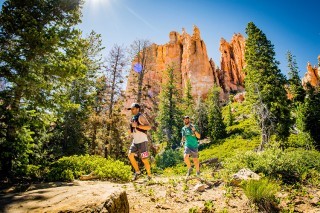
Taking place along the western edge of the Paunsaugunt Plateau in Bryce Canyon National Park, the Bryce Canyon 100 offered 100-mile, 50-mile, 50K and half-marathon options for ultrarunners wanting to take in the beauty of southern Utah. Most of the race was run at elevations exceeding 8,000 feet, adding an additional layer of challenge
The overall 100-mile winner was Mark Hammond of Salt Lake City, who finished in 19:30:25. Riva Johnson of Bend, Oregon was top female (and seventh overall) in a time of 23:57:55.
Here are photos from the race, taken by Derrick Lytle (check out more of his images on his Instagram page).
Photo Gallery
1 of {count}
Back to Start
View Larger Image

View Larger Image

View Larger Image

View Larger Image

View Larger Image

View Larger Image

View Larger Image

View Larger Image

View Larger Image

View Larger Image

View Larger Image

View Larger Image

View Larger Image

View Larger Image

View Larger Image

View Larger Image

Related Galleries
Photos: 2016 Alaska Airlines Rock ‘n’ Roll Seattle Marathon & 1/2 Marathon

Photos: 2016 Alaska Airlines Rock ‘n’ Roll Seattle
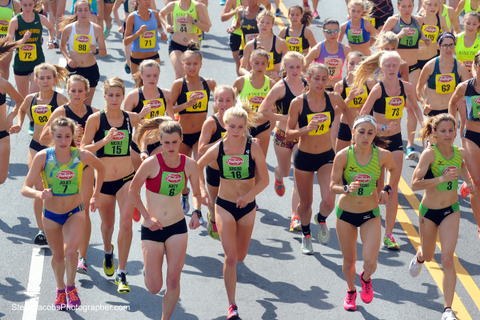
Photos: 2016 Freihofer’s Run for Women 5K

Photos: 2016 Suja Rock ‘n’ Roll San Diego

More Galleries
The post Photos: 2016 Bryce Canyon 100 appeared first on Competitor.com.
June 18, 2016
Photos: 2016 Alaska Airlines Rock ‘n’ Roll Seattle Marathon & 1/2 Marathon
It was a perfect morning for running at the Alaska Airlines Rock ‘n’ Roll Seattle Marathon & ½ Marathon. Jared Ward, who will compete for the 2016 U.S. Olympic team in Rio won the men’s half marathon in 1:06:01 with Kara Ford taking the title for the women in 1:19:59. In the marathon, Samuel Golitom Hadgu and Sophia Liu came out on top after finishing first in 2:26:02 and 2:51:46 respectively. The race attracted more than 20,000 entrants who celebrated the day with Toyota Rock ‘n’ Roll Concert Series headliner The New Pornographers.
Photo Credit: Mason Kelly
Photo Gallery
1 of {count}
Back to Start
View Larger Image

View Larger Image

View Larger Image

View Larger Image

View Larger Image

View Larger Image

View Larger Image

View Larger Image

View Larger Image

View Larger Image

View Larger Image

View Larger Image

View Larger Image

View Larger Image

View Larger Image

View Larger Image

View Larger Image

View Larger Image

View Larger Image

View Larger Image

View Larger Image

View Larger Image

View Larger Image

View Larger Image

View Larger Image

View Larger Image

View Larger Image

View Larger Image

View Larger Image

View Larger Image

View Larger Image

View Larger Image

View Larger Image

View Larger Image

View Larger Image

View Larger Image

View Larger Image

View Larger Image

View Larger Image

View Larger Image

View Larger Image

Related Galleries

Photos: 2016 Alaska Airlines Rock ‘n’ Roll Seattle

2016 Suja Rock ‘n’ Roll San Diego Marathon & 1/2 Marathon Photos

Photos: 2016 Freihofer’s Run for Women 5K

Photos: 2016 Suja Rock ‘n’ Roll San Diego

More Galleries
The post Photos: 2016 Alaska Airlines Rock ‘n’ Roll Seattle Marathon & 1/2 Marathon appeared first on Competitor.com.
Photos: 2016 Alaska Airlines Rock ‘n’ Roll Seattle
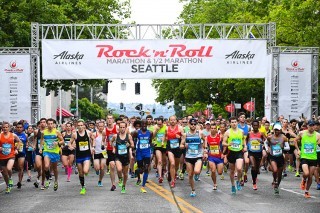
In perfect conditions in the Pacific Northwest, thousands of runners took to the streets for the Alaska Airlines Rock ‘n’ Roll Seattle Marathon and 1/2. The event was headlined by the half-marathon victory by Jared Ward, who will represent the U.S. in the marathon at the Olympics later this summer.
RELATED: Jared Ward Wins Rock ‘n’ Roll Seattle Half Marathon
Here are photos from all the action, taken by Bruce Wodder:
Photo Gallery
1 of {count}
Back to Start
View Larger Image

View Larger Image

View Larger Image

View Larger Image

View Larger Image
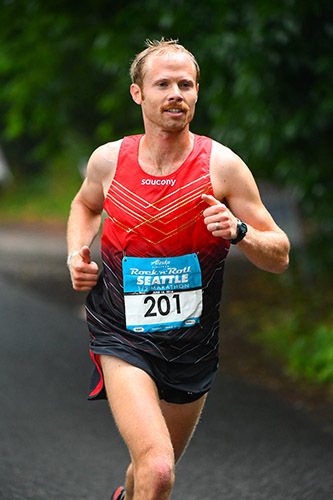
View Larger Image

View Larger Image

View Larger Image

View Larger Image

View Larger Image
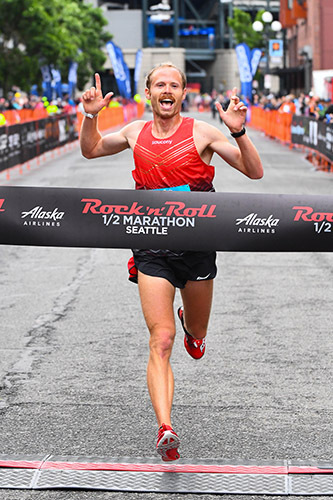
View Larger Image
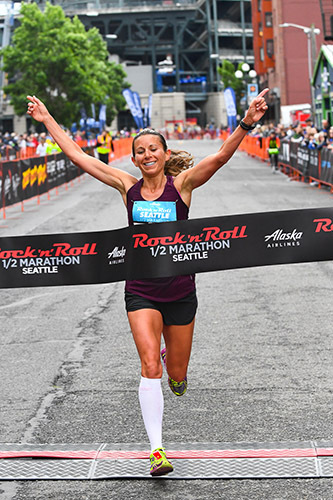
View Larger Image
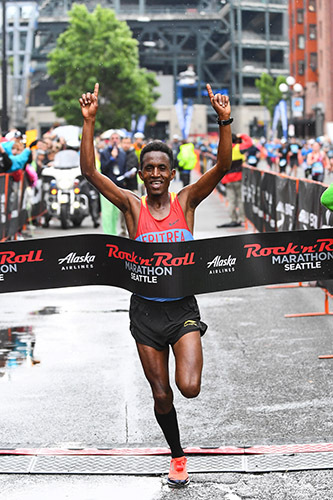
View Larger Image
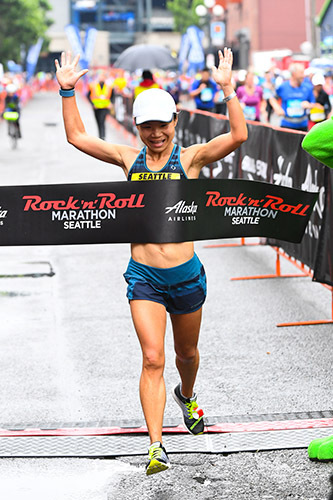
View Larger Image

View Larger Image

View Larger Image

View Larger Image

View Larger Image

View Larger Image

View Larger Image

Related Galleries
Photos: 2016 Alaska Airlines Rock ‘n’ Roll Seattle Marathon & 1/2 Marathon

Photos: 2016 Freihofer’s Run for Women 5K

Photos: 2016 Suja Rock ‘n’ Roll San Diego

Photos: 2016 Suja Rock ‘n’ Roll San Diego Expo

More Galleries
The post Photos: 2016 Alaska Airlines Rock ‘n’ Roll Seattle appeared first on Competitor.com.
Ryan Hall's Blog
- Ryan Hall's profile
- 21 followers



